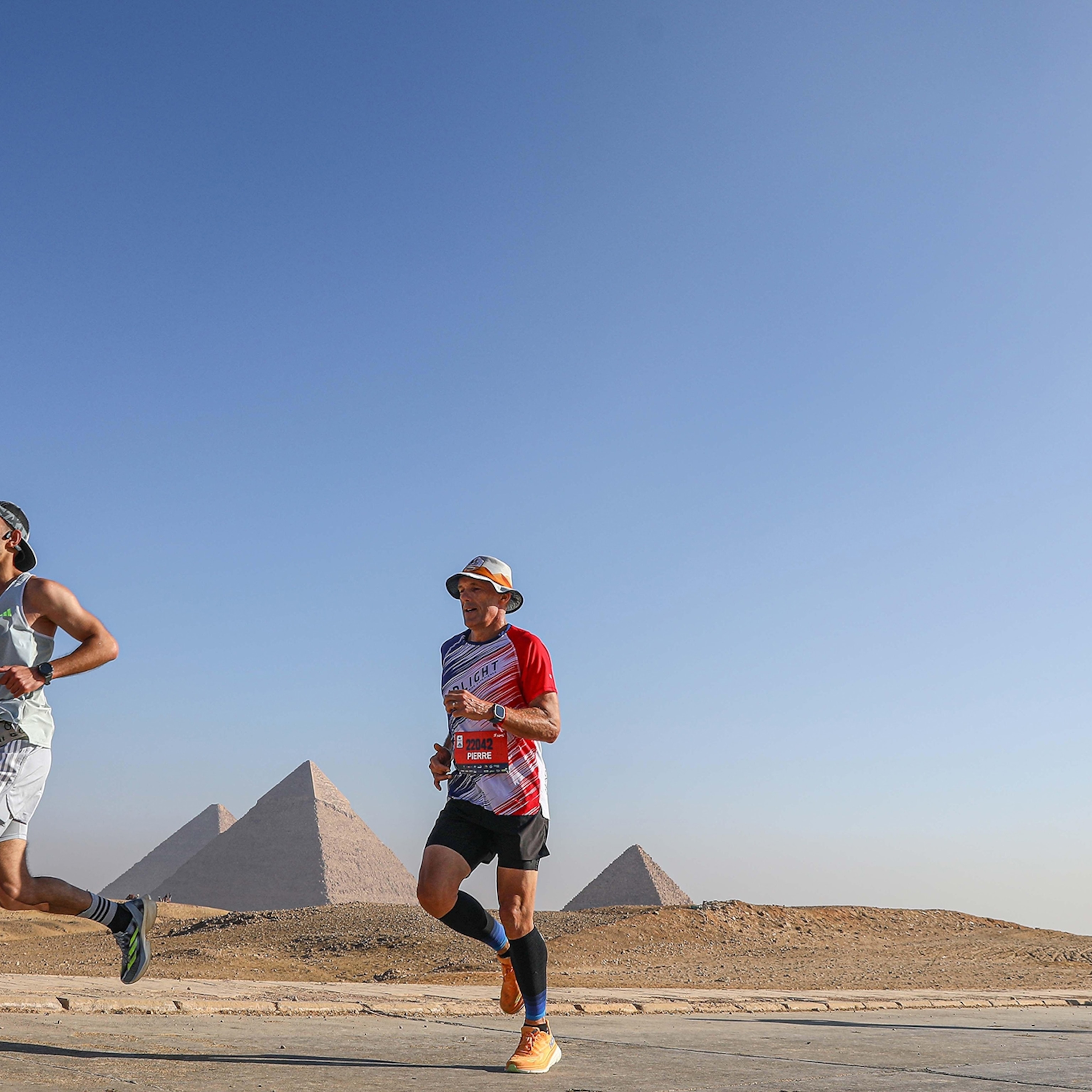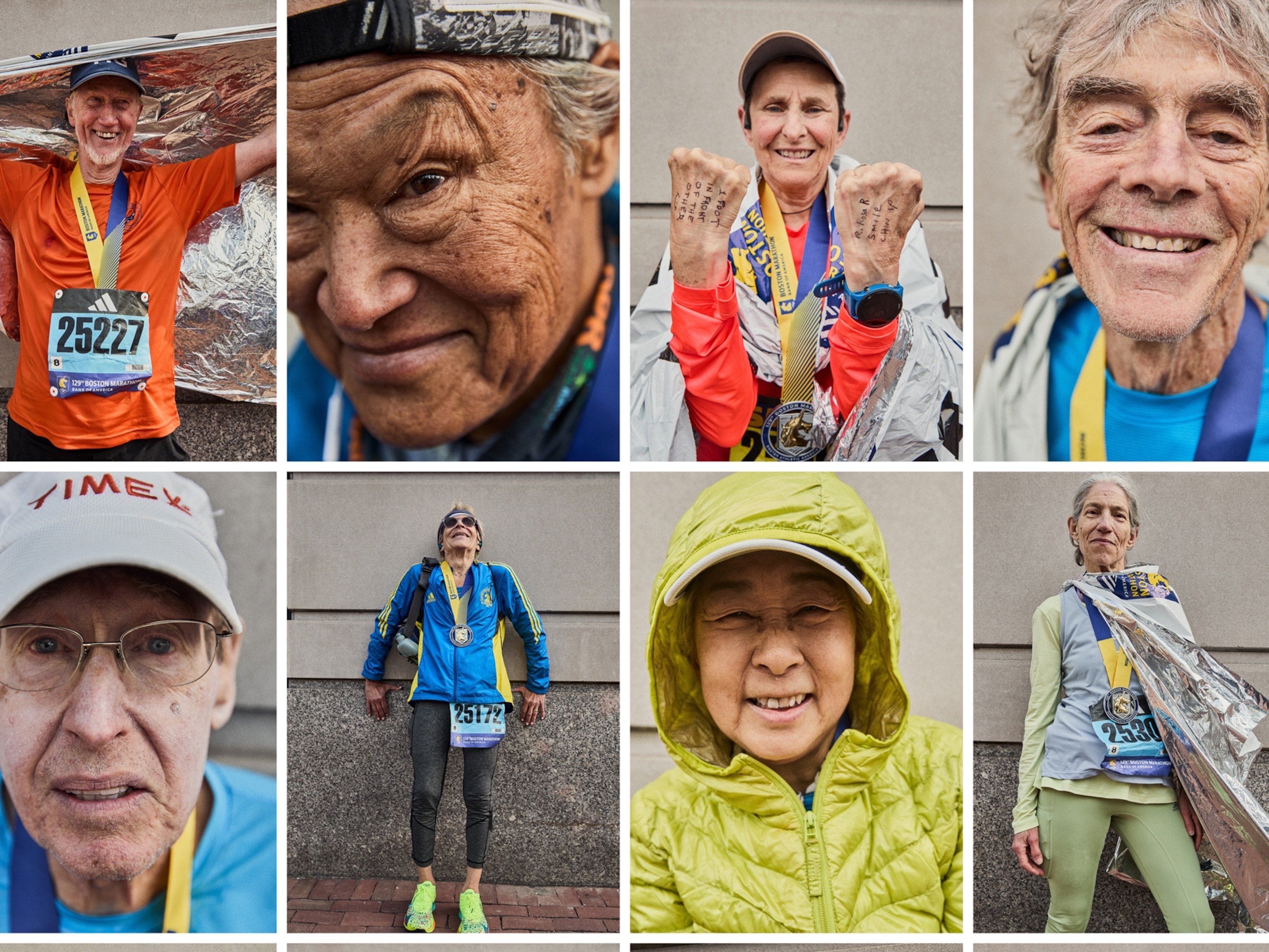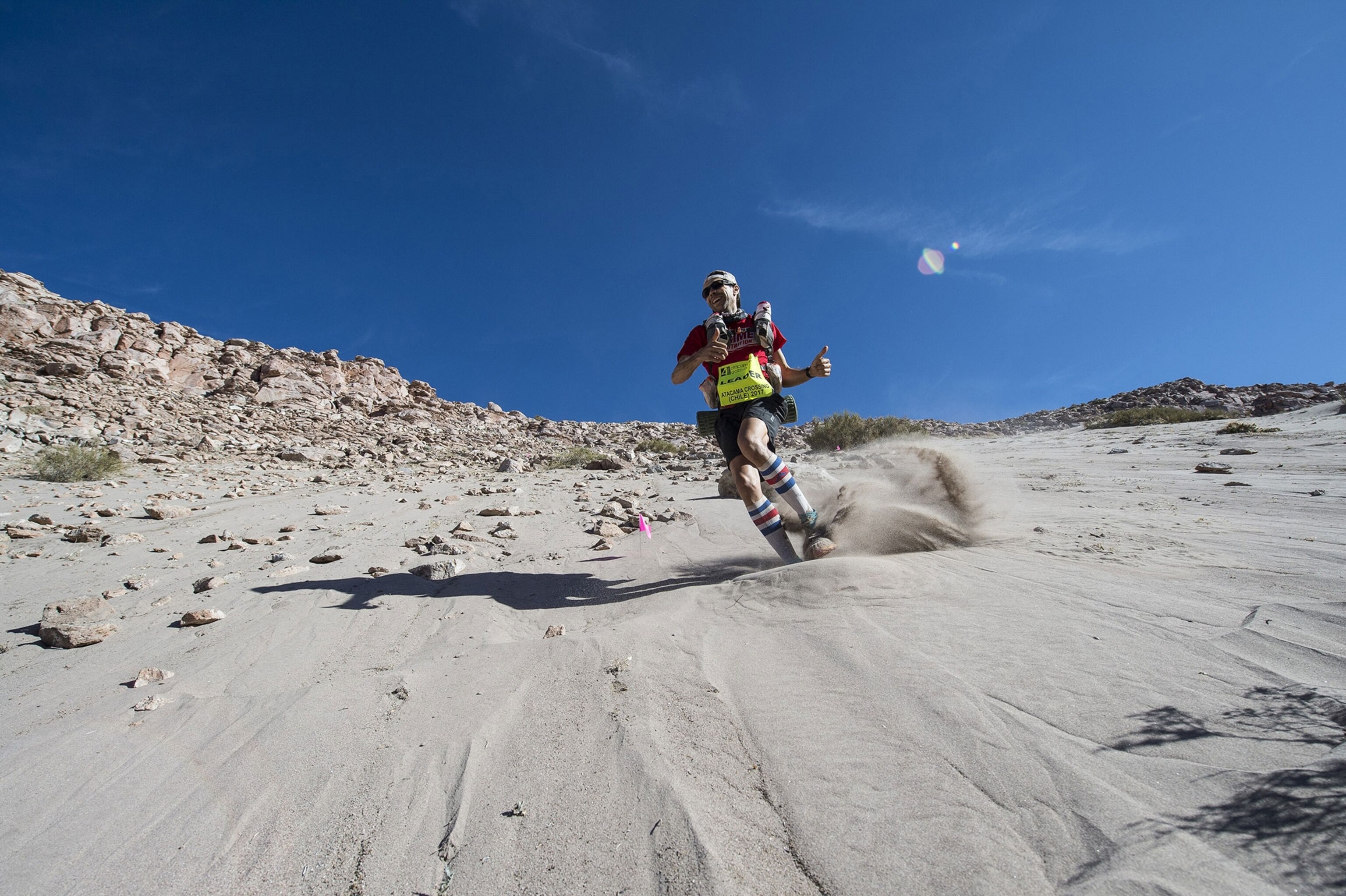
This Unlikely Ultramarathoner Is Fueled by Science, Obsession, and a Love of the Struggle
Winning a 155-mile race is about more than speed.
On a spring day in 2010, Zandy Mangold lay sprawled beneath the rear lift gate of a 4x4, the only shade he could find in this stretch of the outback. As his head throbbed, he fought back bouts of nausea. He pressed his shoulders flat against the rusted-red soil and used a few large water bottles as a makeshift pillow. It was an unseasonably humid week in Northwestern Australia and the lanky photographer from New York City's Williamsburg was just 12 miles into a 155-mile race.
He knew he’d made a terrible mistake.
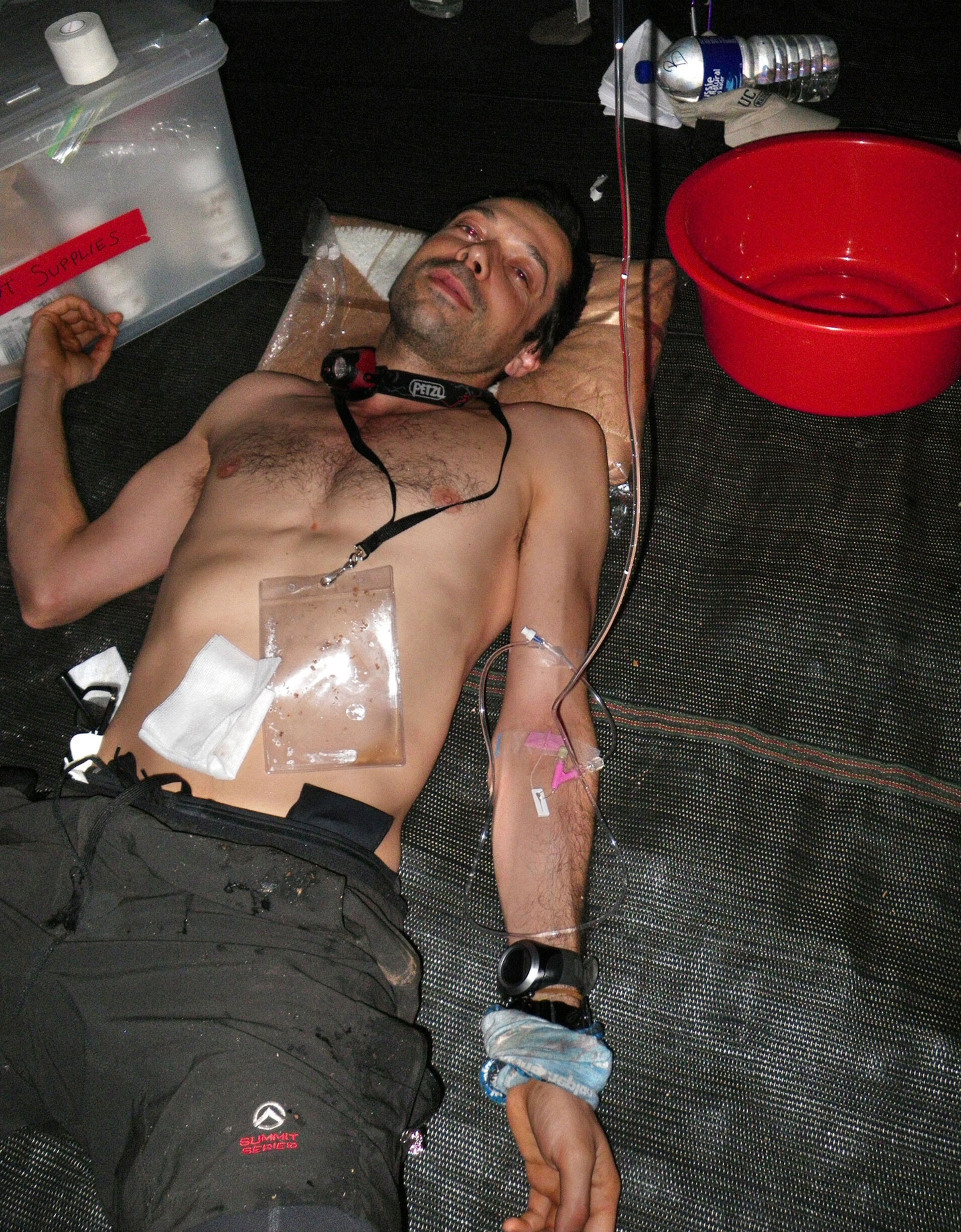
That Mangold’s career in ultramarathons begins here, overcome by heatstroke in suffocating humidity with 143 miles to go, is fitting. When asked, he brushes over the racing success he found years later and focuses on the struggles. The game of ultras, it seems, is one of agony—busted toenails, bloated thighs, and hemorrhoids so enflamed the flight home hurts more than the race. Still, it’s the suffering that fuels this certain kind of obsession.
Seven years after his first ultra, 43-year-old Mangold entered last October’s Atacama Crossing, a race that takes runners through the driest non-polar desert on Earth. He’d maintained meticulous focus on his diet, heart rate, and stride mechanics and believed the race was his to win. But, as in any ultra, his body would only take him as far as his mind would allow.
The Making of an Ultra Athlete
An ultramarathon is any footrace longer than a marathon, or 26.2 miles. They’re held at lengths of 31, 50, 62, or over 100 miles. RacingThePlanet puts on a series of 155-mile desert races in China’s Gobi Desert, Chile’s Atacama Desert, Egypt’s Sahara, and Antarctica. The 4Deserts races span seven days, and runners must carry backpacks and self-sustain during the week.
These runs require a different skillset than marathons. To truly compete at the Boston Marathon, you have to be both an exceptional athlete and exceptionally organized—pacing is of paramount importance when the difference between first and second is a mere 21 seconds. The best marathoners are detail-oriented and Type A.
Ultramarathoners pride themselves in something else entirely. Along the course, things will most certainly go wrong. With sparse campsites and vaguely marked trails, the ability to persevere through disaster is the most essential skill. That means the 4Deserts crowd is made of elite runners, Olympians, and Navy Seals, but also dentists, human rights attorneys, and recovering addicts who just happen to suffer exceptionally well.

Enduring the Discomfort
The Atacama offered plenty of opportunity for Mangold to suffer.
On the third day of his latest attempt, he approached a cringe-inducing salt flat. That morning, he woke up in his tent with stiff knees and ankles from the consecutive marathons he’d already run. Now, with over 20 miles to go before the next campsite, he entered his least favorite part of the Chilean course.
The salt flats are otherworldly setting for a race—so much so that NASA tested the Mars Exploration Rover on the saline and arid land—but it can be brutal. Nevertheless, Mangold kept on, bounding over the sharp, brittle ground, which he describes as “something like frozen broccoli.” Shrubs, inexplicably sprouting from the salted earth, cut his legs until they bled. But he was in first place.
Unless he turned an ankle, he could really win this race.
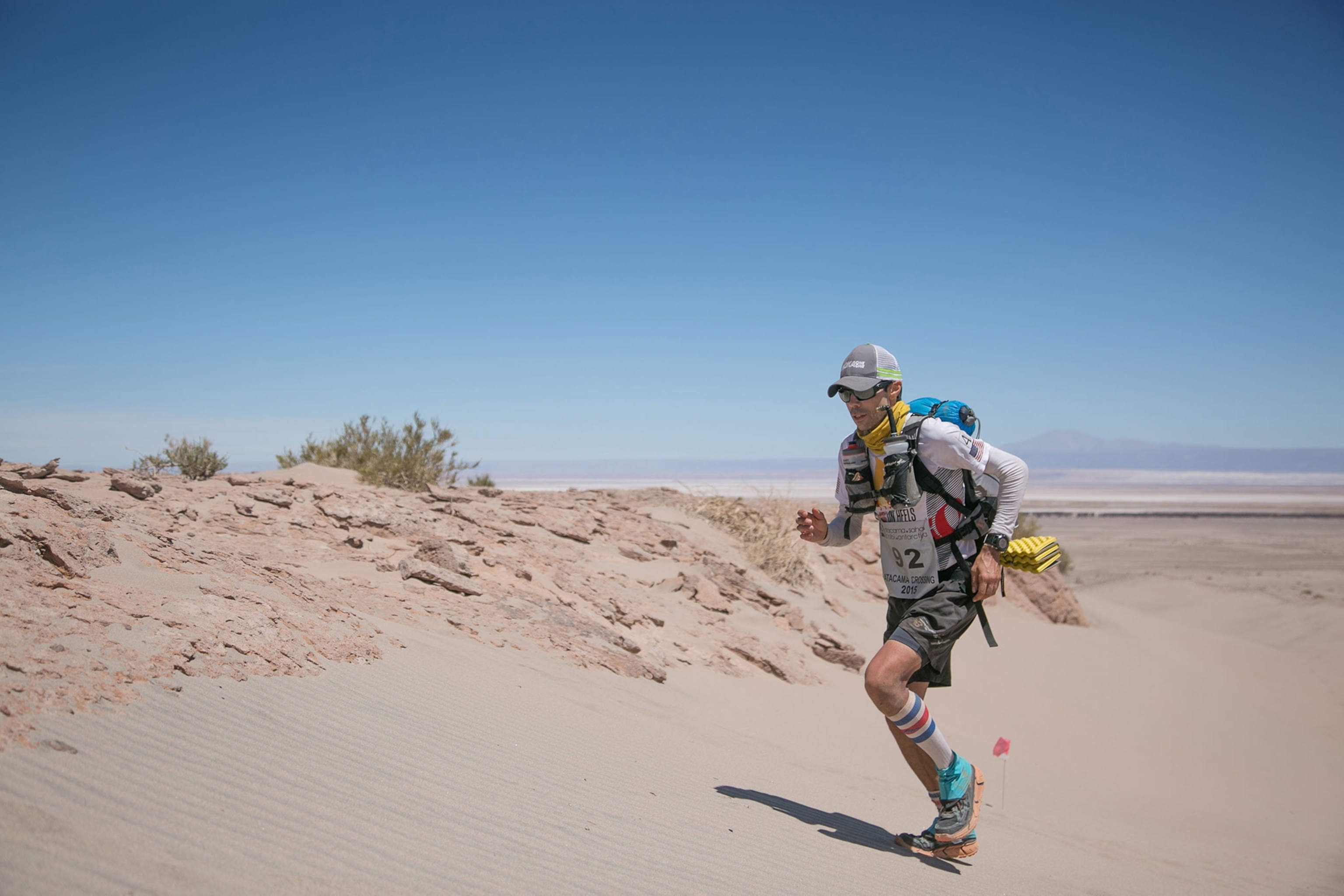
An Unlikely Competitor
Even in the eccentric world of ultramarathon racing, Mangold is an unlikely pacesetter. The Brooklyn-based photographer speaks like a Warped Tour attendee, eats a vegan diet (“I'm not militant!”), drums in a band called Mañana Couch, and sells cookies on the side. Despite his voice (two parts Blink 182’s Mark Hoppus and one part Fast Times at Ridgemont High’s Spicoli), Mangold has a deeply competitive streak and an obsession with testing himself.
“I love pitting myself against other people, and maybe that's a little sick,” he says. “I enjoy trying to outfox or out-suffer or out-strategize people in these super extreme environments."
The pop punk retiree exterior kept his peers from recognizing him as competition from the start. Stephanie Case, an ultrarunner and human rights lawyer, shared a tent with Mangold during his first Australia attempt. She noticed him right away, though not as a threat. “Brooklyn, lanky, artsy, just whatever,” she says, laughing.
Case was near the front the entire race; Mangold was at the very back. She remembers sitting around the campfire, eating freeze-dried meals and sharing stories, and “still no Zandy.” One night, they woke up and noticed he wasn’t in the tent. He’d arrived late and didn’t want to stir the sleeping competitors, so he slept outside under the stars.
To Case, the story speaks to the traits that help make Mangold a great ultrarunner: he is fearless, generous, excessively low maintenance, and a bit odd.
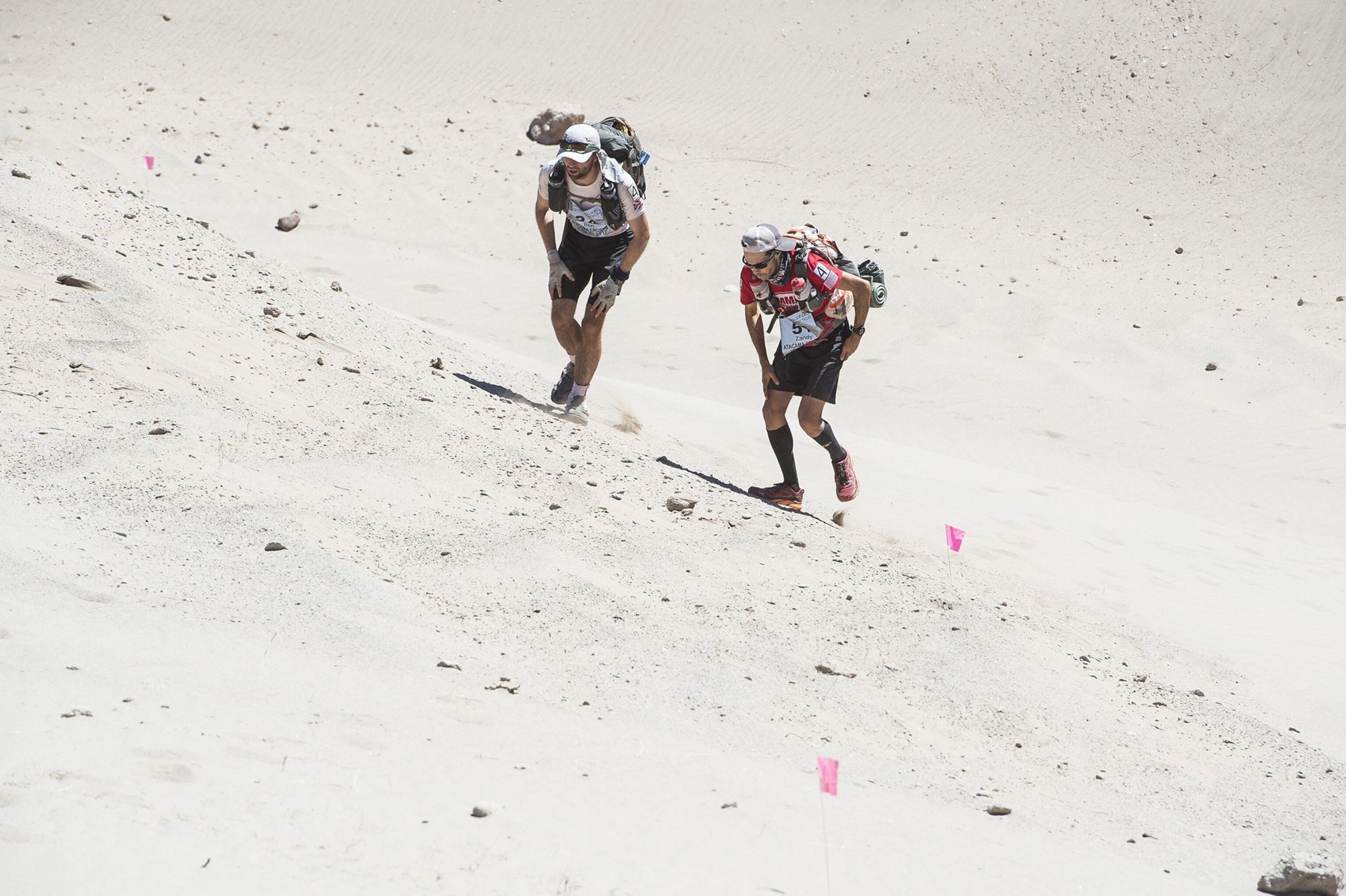
A Winding Path to the Finish Line
Mangold grew up in the woods of New Hampshire and credits his rural upbringing with stoking his survivalist streak. The relative isolation of his home, warmed by wood-burning stoves, pushed him to spend hours fastidiously practicing sports alone. He pitched against a cement wall, studied the form of a basketball shot, and swung a bat in front of a reflective mirror. He took his inclination for solo sports to Connecticut College, where he ran cross country. In 2001, after studying photography at Atlanta’s Portfolio Center, he moved to New York City to become a professional photographer.
If Mangold’s childhood taught him to survive in nature and his college years taught him to run, his first years in New York taught him to suffer.
At almost 30 years old, he was the lowest busboy on the totem pole at a few Manhattan nightclubs. He cleaned up vomit from 8 p.m. to 4 a.m. so he could assist on photo shoots or pick up unpaid gigs during the day. He lived in a warehouse with a bathroom shared by a dozen people. “Urban camping,” he explains. But he looks back romantically on the difficult time. “If you have a goal, something you're striving for, then it's much easier to deal with obstacles,” he says. “It was just that all or nothing mindset." By 2006, he’d started shooting full-time.
It was a photo assignment in 2009—documenting the Atacama Crossing for RacingThePlanet—that first sparked Mangold’s desire to run an ultra. At the portions of the trail the truck couldn’t access, he’d get out and run alongside the competitors. The germ of an idea started working its way into his mind. “I'm actually running faster than some of these people, and my pack is heavy as shit, so hmmmm...” Mangold remembers thinking. A year later, tucked underneath the 4x4 in Australia, it was clear winning wouldn’t be so easy.
Mangold researched the sport and soaked up advice from other runners. He earned a sponsorship with Hammer Nutrition, who supplies his race food—a big improvement from the dried figs he tried to use as nourishment during that initial race. He read Christopher McDougal’s Born to Run and reworked his stride. After two years, it finally began to feel right and he watched his times improve.

By 2013, with his stringent training schedule, Mangold began to believe he could break from the pack. He’d yet to sniff a top finish, but he felt strong and fast and focused.
Weeks before that year’s Atacama Crossing, though, Mangold slipped on a patch of black ice and sprained his ankle. He tried to run the race three weeks later anyway. He managed to end Stage 3 in third place but dropped out before the fourth day. The sprain never fully healed and his ankle continued to nag him for years. “I always had this belief inside: 'If I can just get over this injury…’” Mangold says. “Even though I knew it, I had nothing to back that up. The results weren't there. But I had this belief.”
Two years later, Mangold sprained his other ankle on the first day of another Atacama Crossing. He still finished second. Then he managed to grab fourth at the Keys 100 in Florida. He felt he would win soon, but he couldn’t get over the hump. At a 50-miler before last October’s race, his laces got stuck and he lost his lead as he used a pocketknife to cut himself from his shoes.

Fueled by Science
In the summer of 2017, Mangold heard about a study run by Patrick Davitt, an assistant professor at nearby Mercy College. Davitt was researching the energy effects of different carbohydrates on ultrarunners. He instantly became fascinated by Mangold, who asked question after question about nutrition, could run forever on the treadmill, and was “super laid back and chill.”
Davitt measured Mangold’s VO2 Max (a metric that rates one’s aerobic fitness) and his lactate threshold (the exertion point at which one’s body starts collecting lactic acid, which fatigues muscles). A month before the Atacama Crossing, Davitt made Mangold a simple, individualized graph showing how many calories he burned at specific heart rates over periods of time and where his heart rate should be to stay under his lactate threshold. “We started to fine-tune his fuel consumption,” Davitt says. Mangold obsessed over the details.
To run through the Atacama Desert calls for a certain type of madness—the driest desert on Earth is dystopic as it is beautiful. The heat and altitude, paired with an athlete’s exhaustion, can play tricks on the mind, but Mangold stayed focused during last October’s race. “I'm thinking about nutrition. I'm thinking about my running form. I'm thinking about how I can maximize my forward progress, as boring as that sounds,” he says. “But it’s endlessly fascinating to me. It's like you're trying to solve for pi—you never get to the end of the equation."
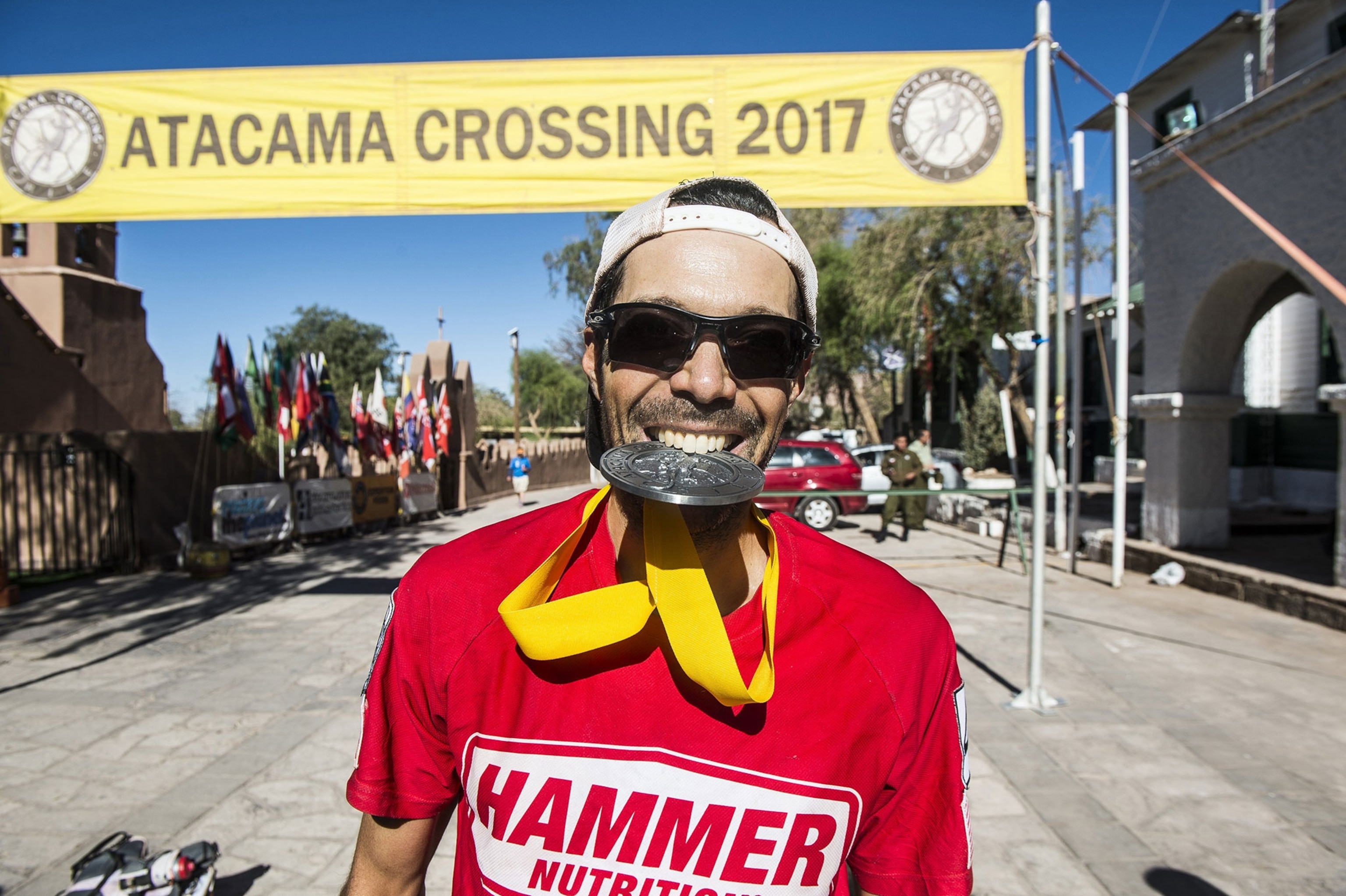
A Near-Destructive Error
The 4Desert races are broken into six stages, raced over seven days, but the stages are not equal. On each of the first four days, competitors run between 22 and 28 miles. On the fifth and sixth day, racers take on “The Long March”—a 43-56 mile run with an overnight checkpoint where competitors can grab a few hours of sleep. The final day, viewed as somewhat ceremonial, is a six-mile run back to the town where the race began.
- National Geographic Expeditions
Thirty-five miles into last October’s “Long March,” Mangold held a comfortable lead. Incredibly, he’d won every single stage of the desert ultra so far. Now with just 10 miles to the final campsite, the easiest terrain he’d faced all week lay ahead: a hard-packed dirt road that rose and fell over the lunar terrain. But nothing is ever so simple in an ultra, and the Atacama had another trick up its sleeve.
As Mangold steeled himself for the final push, he realized his food supply had run dry. He’d recognized his mistake before the day began and knew it would hurt, but not like this. Every inch of his body rang, his stomach ached, and he could hardly keep moving. He kept telling himself to take one more step. “It felt like a bad dream,” he says. “Like you’re in quicksand.”
The disaster wasn’t enough to deter Mangold—he’d prepared for the struggle. Charlie Engle, featured in the documentary Running the Sahara and author of Running Man, which detailed how distance running saved him from a life of addiction, sees a similarity between himself and Mangold. “He thrives on that moment when everything falls apart,” Engle says. “For Zandy, there’s a deep desire to see how far you can push yourself.”
He’d worked for years preparing to cross the driest desert on Earth faster than his competitors, and to win Mangold needed to find a way over the next wall. “I told myself: someday, you're not going to be able to even suffer like this,” he says. “So embrace it."
Finally, Mangold limped into camp, crawled into his tent, and fell asleep.
The Final Push
The final day of the Atacama Crossing takes competitors through bits of flattened desert and bone-dry streams. For the last two miles, runners snake through San Pedro de Atacama, an idyllic little town built from adobe and centered around a Colonial-era church.
By the time they enter town, runners know they will finish the race—many competitors move slowly to take in the sights. Mangold, however, continued to obsess over moving forward as efficiently as possible. He’d been close before. He wasn’t going to leave anything to chance.
It wasn’t until he finally put the medal around his neck that Mangold let what he’d done sink in. Seven years after coming in dead last, he’d finished first in a 155-mile race across the driest desert on Earth. And he’d done it at 43 years old. He had traveled thousands of miles chasing suffering—or that high you get when you overcome the worst of it. He’d taken on all the desert had for him—climbed mountaintop sand dunes, tip-toed through razor-sharp shrubs, and crossed cracked red-rock expanses. In the rapture of that final stage, six miles between him and all he’d worked for, he hardly even felt the pain.
“If you ask me,” he says, grinning. “It beats any day in New York City.”
